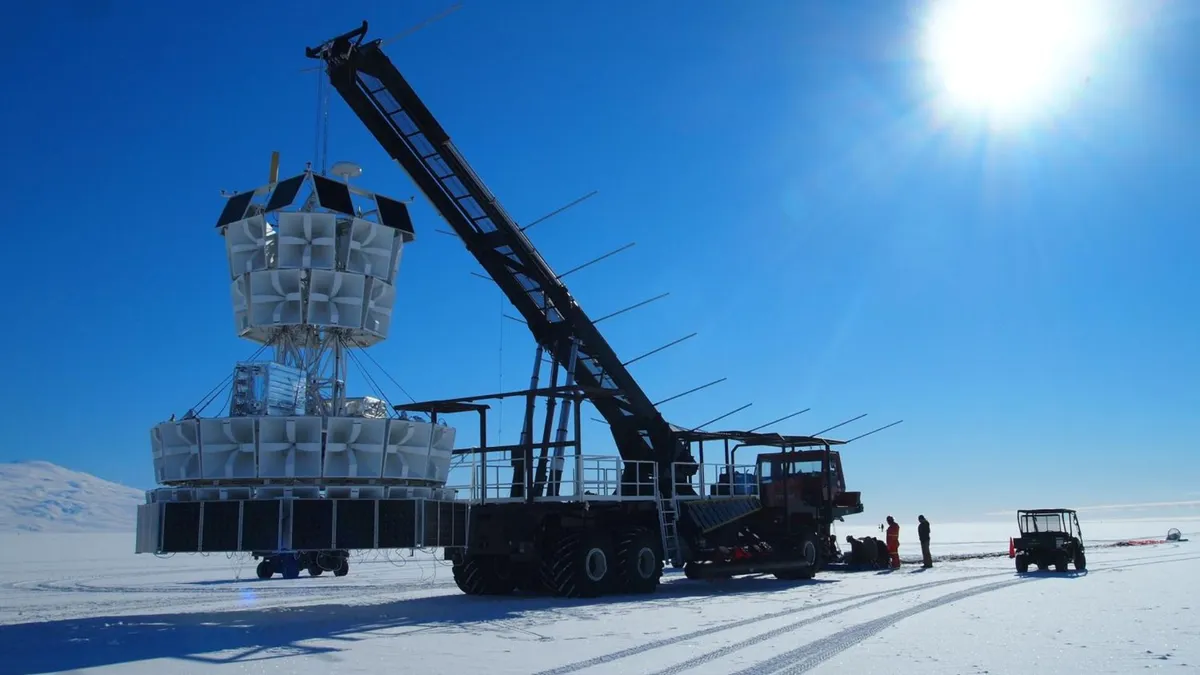
A groundbreaking discovery has emerged from the Antarctic Impulsive Transient Antenna (ANITA) experiment, a sophisticated cosmic ray detector operating high above the icy expanse of Antarctica. This international collaboration, which includes esteemed researchers from Penn State University, has recorded peculiar radio pulses that challenge established physics, prompting scientists to rethink their understanding of particle interactions.
The ANITA experiment utilizes advanced radio antennas mounted on balloons flying approximately 40 kilometers above the surface of Antarctica. These detectors are designed to capture emissions generated when high-energy cosmic particles interact with the ice. Typically, researchers expect to detect signals from neutrinos, which are known as some of the most elusive subatomic particles in the universe. However, the recent signals observed by ANITA did not conform to the expected behavior of neutrino emissions.
Remarkably, the radio waves were detected at steep angles, rising up as much as 30 degrees below the horizon. According to Stephanie Wissel, a physicist from Penn State who is part of the ANITA team, this implies that the particles had to traverse the Earth's crust. Wissel noted that by the time such a signal would emerge from below the surface, it should have been absorbed, leading to a significant discrepancy in existing particle theories.
Neutrinos are nearly massless and chargeless particles that traverse space and even pass through matter, including the human body, with minimal interaction. Wissel emphasizes that "you have a billion neutrinos passing through your thumbnail at any moment." Detecting these elusive particles is notoriously challenging, yet they can provide vital information about cosmic events such as supernovas and gamma-ray bursts.
What makes the ANITA signal perplexing is that if a neutrino were indeed the source, its detection would suggest it traveled through the Earth without interacting until its emergence. However, the steep angle and unique characteristics of the signals indicate otherwise. Wissel admitted, "We still don’t actually have an explanation for what those anomalies are," suggesting that the source is most likely not a neutrino.
To validate their findings, the ANITA team cross-referenced their data with results from two other prominent neutrino detectors: IceCube in Antarctica and the Pierre Auger Observatory in Argentina. Unfortunately, neither facility reported any signals similar to those detected by ANITA. This absence of corroborative data, according to Wissel, effectively rules out the most probable known particle sources, reinforcing the idea that something unprecedented may be occurring.
Researchers conducted extensive simulations and utilized models to filter out background noise and established cosmic-ray signatures. The result of this meticulous analysis left scientists with one conclusion: the signals detected by ANITA remain distinctly "anomalous."
In light of these extraordinary findings, Wissel and her colleagues at Penn State are already in the process of developing a more advanced version of the ANITA experiment, named PUEO. This next-generation detector promises increased sensitivity, enhancing the likelihood of identifying the origins of these unusual emissions. Wissel is optimistic that PUEO could detect more of these enigmatic signals, paving the way for a deeper understanding of whether they signify new physics or are simply rare environmental phenomena.
As the ANITA experiment continues to push the boundaries of our knowledge about cosmic rays and particle physics, the scientific community eagerly anticipates the insights that the PUEO detector will provide. The quest to unravel these cosmic mysteries is just beginning.